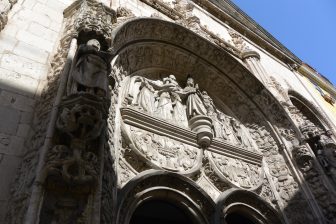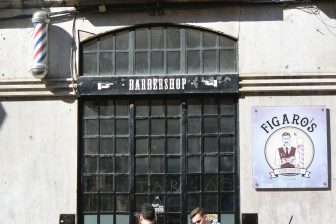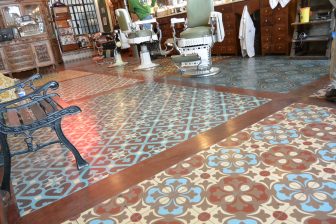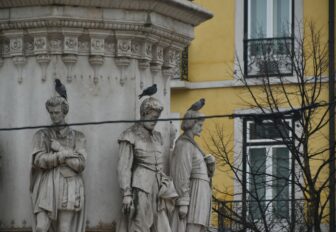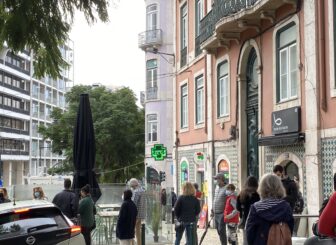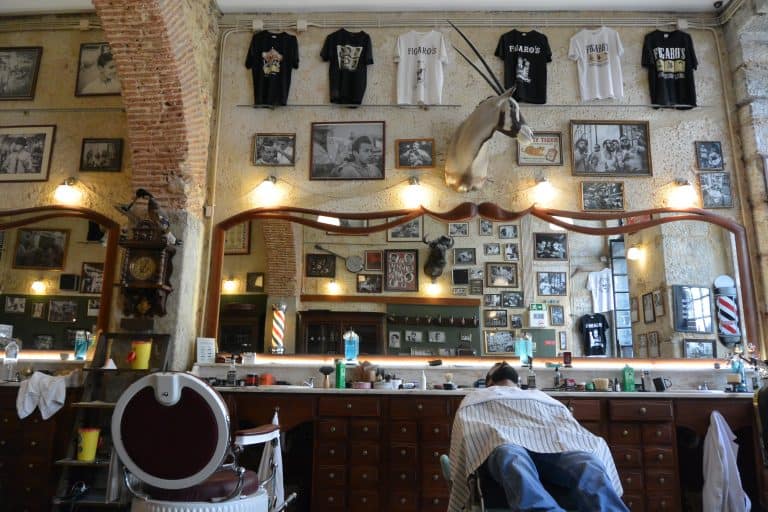
[ Feb.2019 ] When we arrived at Praça do Comércio in Lisbon in Portugal, wedecided to look for the Castella cake shop, which we had been before, so that we could have a rest.
We walked around the place where we thought it was and found a church with magnificent carvings on the facade instead, so we went in to look at it.
To be honest, the inside was simpler and not as impressive as the facade.
According to the information board at the front, it was a church called Igreja de Noss Senhora da Misericórdia.
To be more precise, in the 15th century it was a church called Igreja de Noss Senhora da Misericórdia, which was commissioned by Eleonor of Viseu, the wife of the 15th 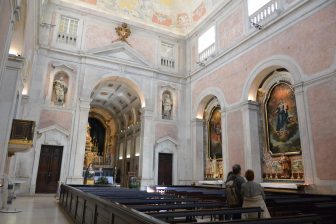
However, the original church was destroyed by the 1755 earthquake and only the portal was left.
That is why only the entrance was so gorgeous.
Apparently, the portal was built in the style of the Manueline, the Portuguese architectural style which was popular between the late 15th century and the 16th century.
In the carvings, angels, flowers, armillary spheres and others things are depicted.
After this visit, we continued looking for the Castella cake shop, but we could not find it, so we went to the café which was at the spot where the Castella shop used to be.
Drinking a cup of coffee, I looked it up on the internet and found that the Castella shop we were looking for had been closed down and another person started another Castella shop elsewhere.
We did not have time to visit the new shop unfortunately.
After the coffee, it was the time for my husband’s haircut.
As I have told you many times, he often has his hair cut during our travelling.
Some years ago, he had a very good haircut in Coimbra in Portugal, so we were expecting something good here, too.
We had told our guide about our tradition the day before and he recommended a barbershop called ‘Figaro’, so we booked there.
When we went there, it certainly looked traditional with a beautiful tiled pattern on the floor.
The sign says in English ‘we specialise in classic haircuts from the 1920s to the 1950s’.
We were a little bit suspicious from the start, though, because when we first walked up to the shop just after 11am, which was when they opened, it was still closed.
Then, when we walked in at the time of the reservation, nobody welcomed us.
But we thought ‘if the result is good, it does not matter’ and my husband sat on the antique-looking chair.
A young barber started cutting his hair.
During that time, another foreign tourist came in and I heard another young member of staff saying “With a reservation it costs €25, but without, it costs €35”.
That is a bit strange, isn’t it?
When this tourist’s girlfriend sat on the empty chair next to him, the barber told her bluntly “These chairs are only for our customers”.
During their work, these two young barbers kept chatting to each other.
Apparently, my husband asked him to cut more, but the barber ignored him, saying “You need this length for the shape”.
The result was a hairstyle with a side-parting, which was OK at the time, but when he washed his hair the next morning, it was already a mess.
It was the worst haircut experience we’d had in our history of our ‘haircut on holiday’.
It was so bad that my husband had to go to his regular barbershop in Milan 5 days later and the barber there was shocked, saying “What happened to your hair?!”.
Portugal had a tough time economically until about 6 or 7 years ago and now they are having a much better time, but riding on the up-draft, some stupid ‘trendy’ shops seemed to have emerged.
I am sure they will not last long.

